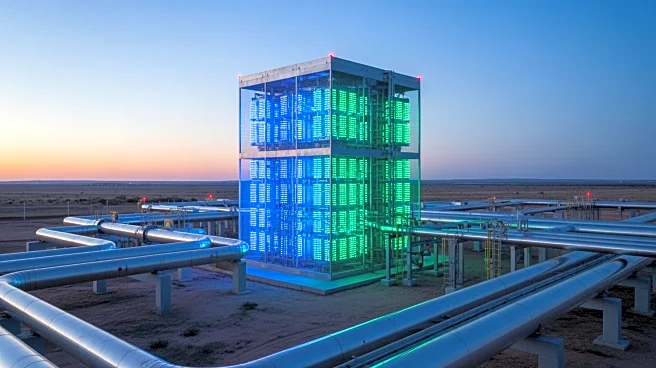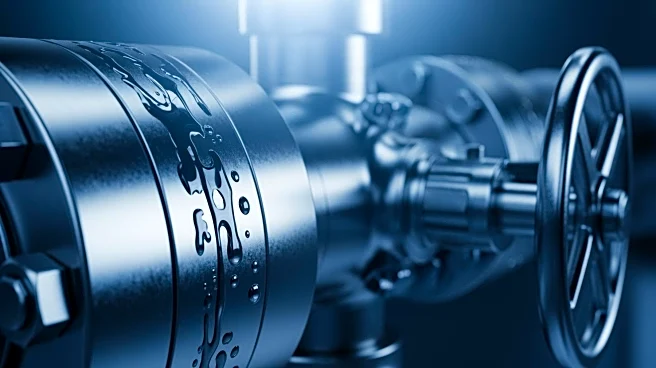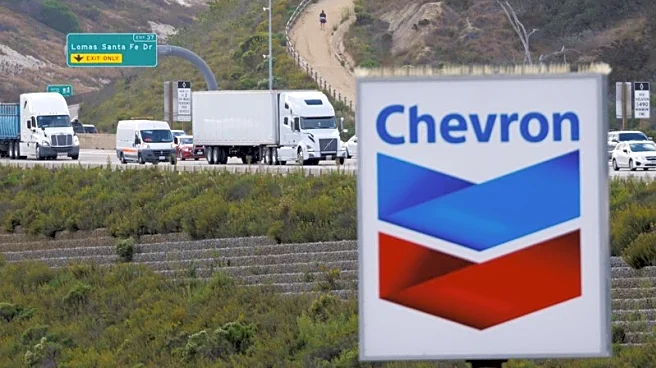What's Happening?
Chevron Corporation has announced its decision to establish its first natural gas-fired power project for a data center in West Texas. This initiative marks Chevron's entry into a new business line aimed at capitalizing on the growing demand for energy
to power data centers, particularly those supporting artificial intelligence (AI) operations. The project is strategically located in the Permian Basin, a region known for its abundant natural gas production. Chevron is currently in exclusive negotiations with an unnamed data center end user and plans to make a final investment decision by early next year. The facility is expected to be operational by 2027, with an initial capacity to generate up to 5,000 megawatts, potentially expanding to 2,500 megawatts in its third year. This capacity is comparable to that of two nuclear reactors. The project will operate independently from the main power grid to avoid competition with the general electricity supply.
Why It's Important?
The establishment of this power project is significant as it represents a strategic move by Chevron to diversify its business operations and tap into the burgeoning AI sector. By utilizing the excess natural gas from the Permian Basin, Chevron aims to address the energy demands of data centers, which are increasingly being located closer to fuel sources rather than population centers. This project not only provides a new revenue stream for Chevron but also helps in managing the surplus natural gas that often exceeds pipeline capacity. The collaboration with Engine No. 1 and the procurement of natural gas turbines from GE Vernova Inc. further underscore Chevron's commitment to this venture. The project is poised to enhance Chevron's production capabilities while maintaining a reduced capital expenditure, thereby increasing its free cash flow and shareholder value.
What's Next?
Chevron plans to elaborate on its power strategy during its upcoming investor day, the first in nearly three years. The company has set ambitious long-term targets, including a reduced annual capital budget and increased free cash flow by 2030. Chevron also aims to grow its oil and gas production by 2% to 3% annually, surpassing previous analyst expectations. The company intends to continue its stock buyback program, with plans to repurchase between $10 billion and $20 billion of stock annually through 2030. These strategic initiatives are designed to ensure Chevron's resilience and preparedness for future market fluctuations.














